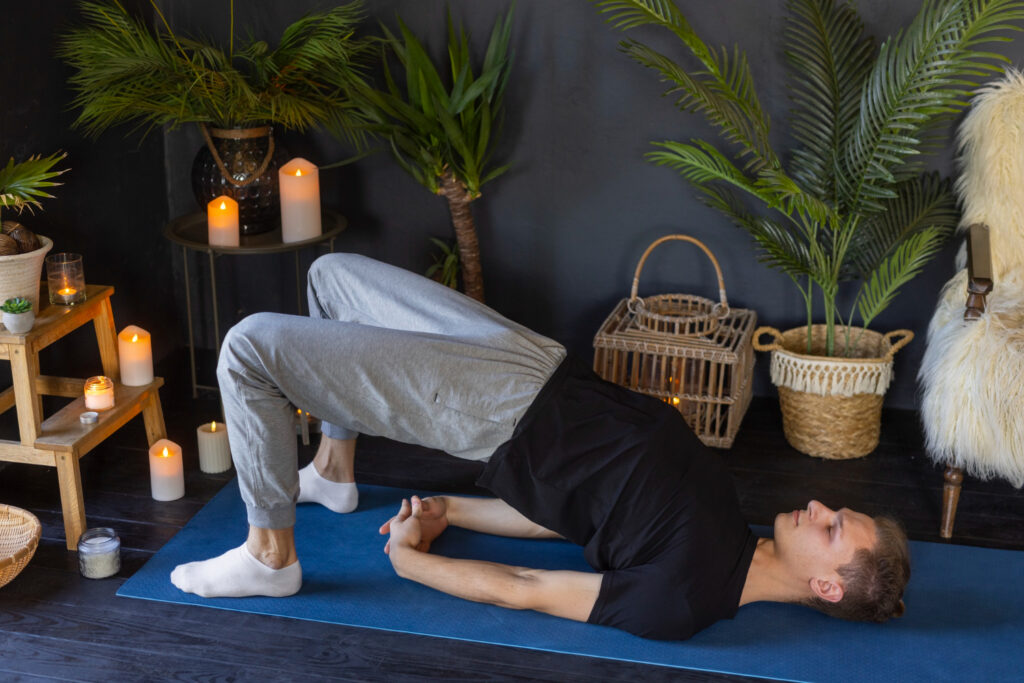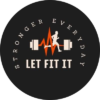Somatic Exercises for Anxiety: The Weirdly Simple Way to Calm Down
If you’ve ever been told “just relax” while your chest feels tight, your brain won’t stop spinning, and your stomach’s doing backflips… You know how useless that advice is. Anxiety doesn’t exactly take orders. That’s exactly why somatic exercises for anxiety can be a game-changer.
Here’s the thing, though, anxiety isn’t just in your head. It’s in your body. It’s in that jaw you’ve been clenching all day without noticing. It’s in your shoulders that somehow live halfway up your ears. And that’s where somatic exercises for anxiety come in.
Sounds fancy, right? “Somatic” just means body-based. And these exercises are basically gentle, mindful movements designed to help your body chill out so your mind can follow.
So instead of fighting anxiety with willpower (which rarely works), somatic work sneaks in the back door, calming your nervous system first, which then tells your brain: “Hey, we’re safe. It’s okay to breathe again.”
So… What Even Are Somatic Exercises?
Okay, visualise this. The majority of exercises we think of, such as the hefty squats, the treadmill grind, and those boisterous HIIT courses when someone is shouting, “push harder!” are all about effort. Sweat, reps, burn. Somatic work? Totally different vibe. And when you approach it as somatic exercises for anxiety, the focus shifts from performance to calming your body.
It’s slower. Almost awkwardly slow at first. You’re not chasing a calorie goal or trying to PR your deadlift. You’re just… noticing. Like, oh wow, my jaw has been locked all day or why does my stomach feel like it’s tied in knots?
The magic of it is that by paying attention to those tiny things, the tension hiding in your shoulders, the shallow breath you didn’t realize you were taking, your body starts to let go. And your mind follows your body when it relaxes.
It’s less about “working out” and more about tuning in.
resetting your neurological system to prevent you from being controlled by stress.
Think of them as mind-body reset buttons. A body scan. A grounding practice. A slow stretch where you pay attention to how it feels instead of how it looks.
And the best part? You don’t require a lot of spare time or expensive equipment. Most of these can be done literally sitting in your chair right now.
Why Somatic Exercises Work (Science, But Make It Simple)
Here’s the nerdy part, but stick with me because it’s kind of fascinating. Anxiety cranks up your sympathetic nervous system, also known as fight-or-flight mode. Heart races. Muscles tighten. Breathing gets shallow. Your brain goes: danger, danger, danger.
Through somatic activities, your parasympathetic nervous system, sometimes known as “rest and digest,” is activated. We practically tell our bodies that we are safe when we ground our feet, calm our breathing, or soften our motions.
And the body listens. Cortisol drops. Heart rate slows. Muscles unclench.
There’s research showing practices like deep breathing, body awareness training, and gentle movement (yoga, tai chi, etc.) lower anxiety symptoms. But honestly, you don’t need a scientific journal to prove it. Try a five-minute body scan tonight and notice how your jaw feels after. That’s proof enough.
The Real Benefits (Beyond “Feeling Relaxed”)
People often think relaxation = lying on the couch scrolling TikTok. Not quite. That’s numbing, not healing. Somatic exercises for anxiety actually reset your system. Over time, you might notice even deeper changes, the more consistently you practice somatic exercises for anxiety:
- That neck tension? It stops showing up every time you’re stressed.
- Sleep gets better because your body isn’t buzzing with nervous energy.
- You start catching anxious spirals earlier, before they explode.
- You feel more in your body instead of stuck in your head 24/7.
- Even your mood improves because your nervous system isn’t on constant high alert.
- And here’s a sneaky one: your relationships get better. Why? Because when you’re calmer inside, you stop snapping at people outside. (Been there, done that.)

A Beginner-Friendly Somatic Anxiety Routine
Alright, enough theory. Here’s how you can actually do this. Don’t overthink it; even five minutes is a win.
- Body Scan (start simple)
Lie down or sit somewhere comfortable. Close your eyes. Slowly move your attention from head to toe. Where’s the tension? Shoulders? Jaw? Belly? Mindful.org offers a beginner-friendly body scan you can follow.
When you find a tight spot, breathe into it. Imagine the tension melting like butter on a hot pan. - Grounding Through Your Feet
Sit or stand with both feet planted. Really feel the ground holding you up. Imagine roots extending deep into the ground from your feet.
It sounds a little woo-woo, but try it during a panic wave and you’ll see grounding works like magic. - Belly Breathing (a game changer)
Hand on belly, hand on chest. Breathe via your nose, paying attention to your abdomen rather than your chest. Breathe out through your mouth more slowly than you did in.
Do this for 3 minutes and watch your heart rate calm down. - Gentle Movement (release the grip)
Roll your shoulders. Slowly stretch your arms overhead. Rotate your neck side to side. Pay attention to sensations: warmth, stretch, relief.
If you want more structure, try a tai chi video or a super slow yoga flow. let fit it also has a great guide for how to build muscle at home without any equipment
“But What If I’m Bad at It?” (Spoiler: You Can’t Be)
Here’s the thing: you literally cannot fail at somatic exercises. You can’t do them “wrong.” You don’t need to touch your toes or clear your mind of every thought.
Common struggles people face:
- “I can’t focus.” Totally normal. Minds wander. Just come back when you notice.
- “I don’t feel anything.” Stick with it. Awareness builds over time.
- “I don’t have time.” Try 2 minutes before bed. Everyone has 2 minutes.
Being present is more important for progress than being flawless.
Making It Part of Real Life (Not Just a One-Off)
Okay, this is where most people fall off. They try somatic work once, feel good, then forget about it until the next panic attack. However, the true transformation takes place when there is constancy.
Some sneaky hacks to keep somatic exercises for anxiety part of your daily routine:
- Pair it with habits you already have. (Body scan after brushing your teeth, grounding while waiting for your coffee to brew.)
- Put reminders on your phone.
- Make a comfortable “ritual space” with a chair, a mat, or even just a candle in a corner. Try these yoga exercises for weight loss to pair with your somatic practice.
- Try guided audios if you get lost.
Consider it similar to brushing your teeth. Daily small reps rather than sporadic emergency fixes.
Why Somatic Exercises Beat “Just Relax” Advice
Ever tried to force yourself to relax? It’s similar to telling your brain to “not think of a pink elephant”. You know what appears? Yup, a pink elephant.
Somatic exercises don’t force relaxation. They sneak around the mental chatter and talk directly to your body. When the body softens, the mind naturally follows.
The strange thing is that it can seem impossible to sit still and try to “meditate” when you’re experiencing high levels of anxiety. Somatic material? Much simpler. You move, breathe, and become aware of your body, and all of a sudden, it doesn’t feel like a fight. Check out our pre workout supplements guide if energy feels low.
Final Thoughts: Start Small, Stay Kind
Here’s the takeaway: somatic exercises for anxiety are not about doing it perfectly. They’re about coming back to your body, little by little.
Start with a body scan tonight. Or try three deep belly breaths right now. That’s it. No pressure. Even these small steps count as somatic exercises for anxiety.
You’ll eventually find that your body doesn’t react to fight-or-flight situations as quickly. You’ll sleep better. You’ll feel calmer. Additionally, it’s possible that anxiety won’t make all the decisions anymore.
Be patient. Be consistent. And don’t forget, progress here looks more like a slow unfolding than a quick fix.


Pingback: Weight Training for Women: The Truth No One Told You
Pingback: Home Workouts VS Gym Workouts: Which Is Better for You?